Submitted by WA Contents
Marc Mimram built greenhouses in all sides of a tennis stadium to attract different audiences
France Architecture News - May 23, 2019 - 05:18 16847 views
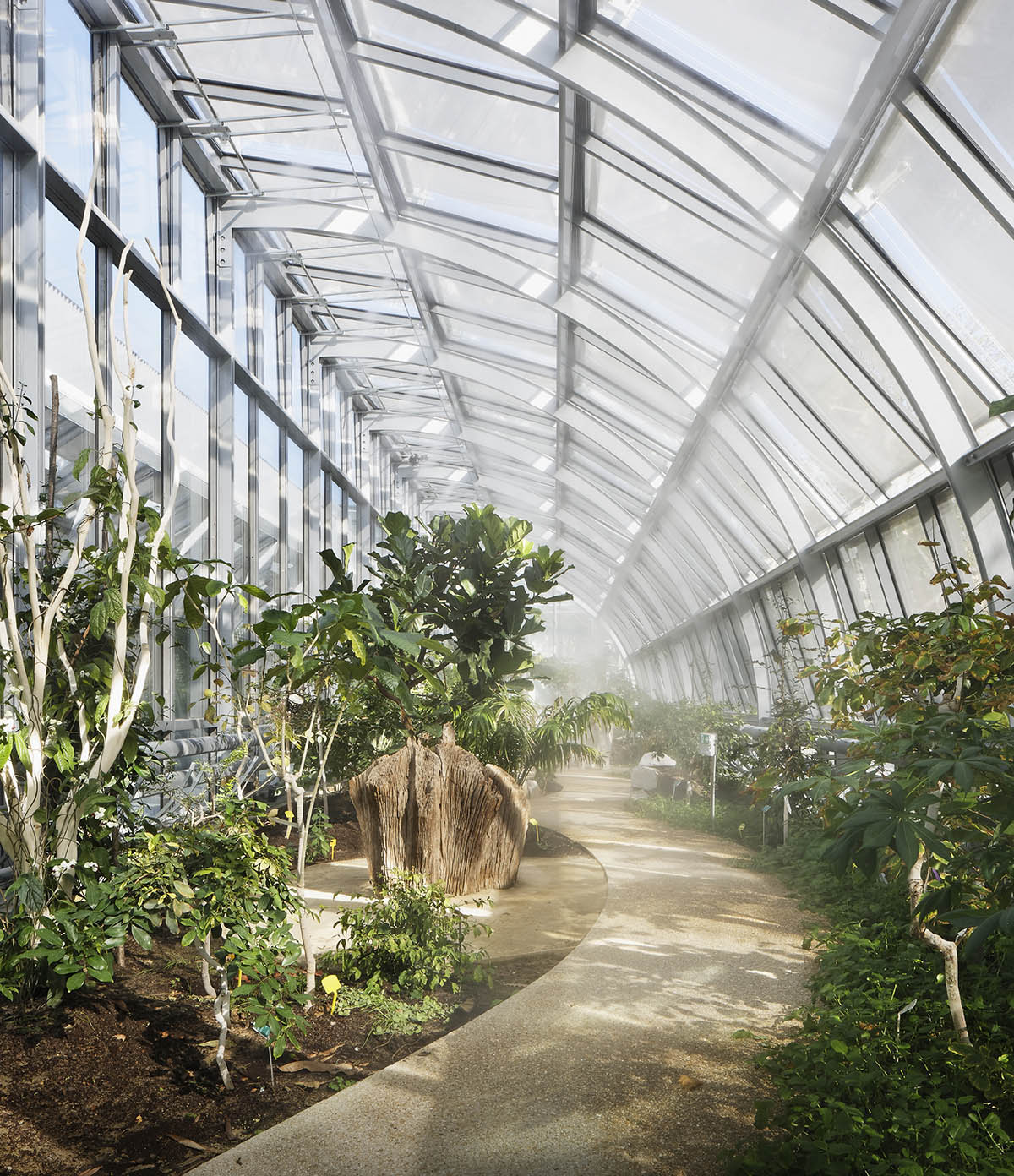
Paris-based studio Marc Mimram Architecture & Associés has built greenhouses in all sides of a tennis stadium to attract visitors for all seasons and expand the stadium's capability for the environmental aspects.
The studio, commissioned by the Fédération Française de Tennis, was asked to expand the botanical greenhouses built in the 19th century in the Jardin des serres d’Auteuil, Paris, France.
The botanical greenhouses were built by Jean Camille Formigé, an architect for the garden walks and plants department of Paris (Service des Promenades et Plantations), who created a historical landmark made of steel and glass emblematic of the architecture of the time.
But the eastern part of the garden has been marked by the presence of technical buildings and temporary greenhouses of no cultural interest.
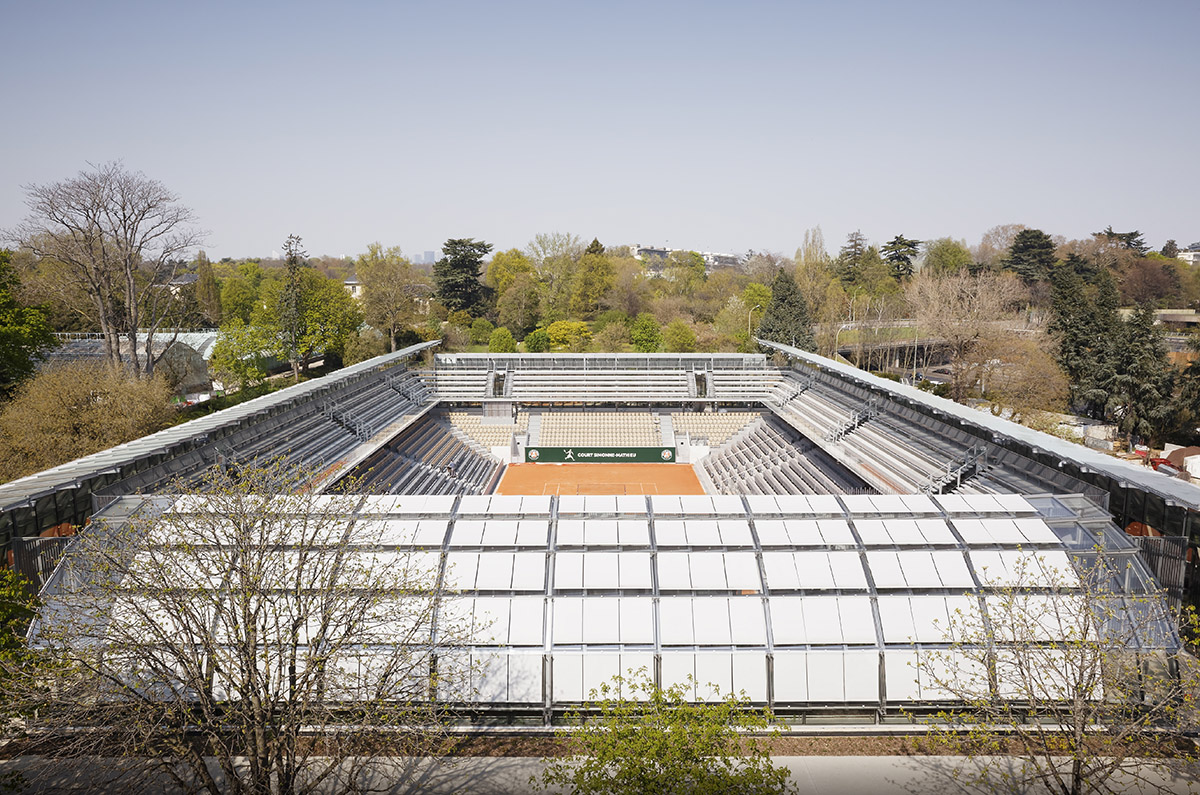
The Fédération Française de Tennis and the Direction des Espaces Verts et de l’Environnement de la Ville de Paris asked to redesign the greenhouses with a new sports facility based on 3 characteristics: building a high-performance building for sport and its public, improving the botanical character of the garden by building new greenhouses, entering into dialogue with Formigé’s historic buildings.
"The opportunity is thus offered to improve the situation in every sense of the word. That of the garden, by embellishing the eastern part in connection with the boulevard d’Auteuil to create a unity which, between the contemporary garden and the boulevard d’Auteuil, can dialogue with the original composition of greenhouses by removing the impact of the storage areas," said Marc Mimram Architecture & Associés.
"The garden this way should find greater coherence. The construction of the new greenhouses is based on a new botanical project to explore the flora of four continents (America, Asia, Africa and Oceania) echoing the five historic greenhouses dedicated to endangered ecosystems."
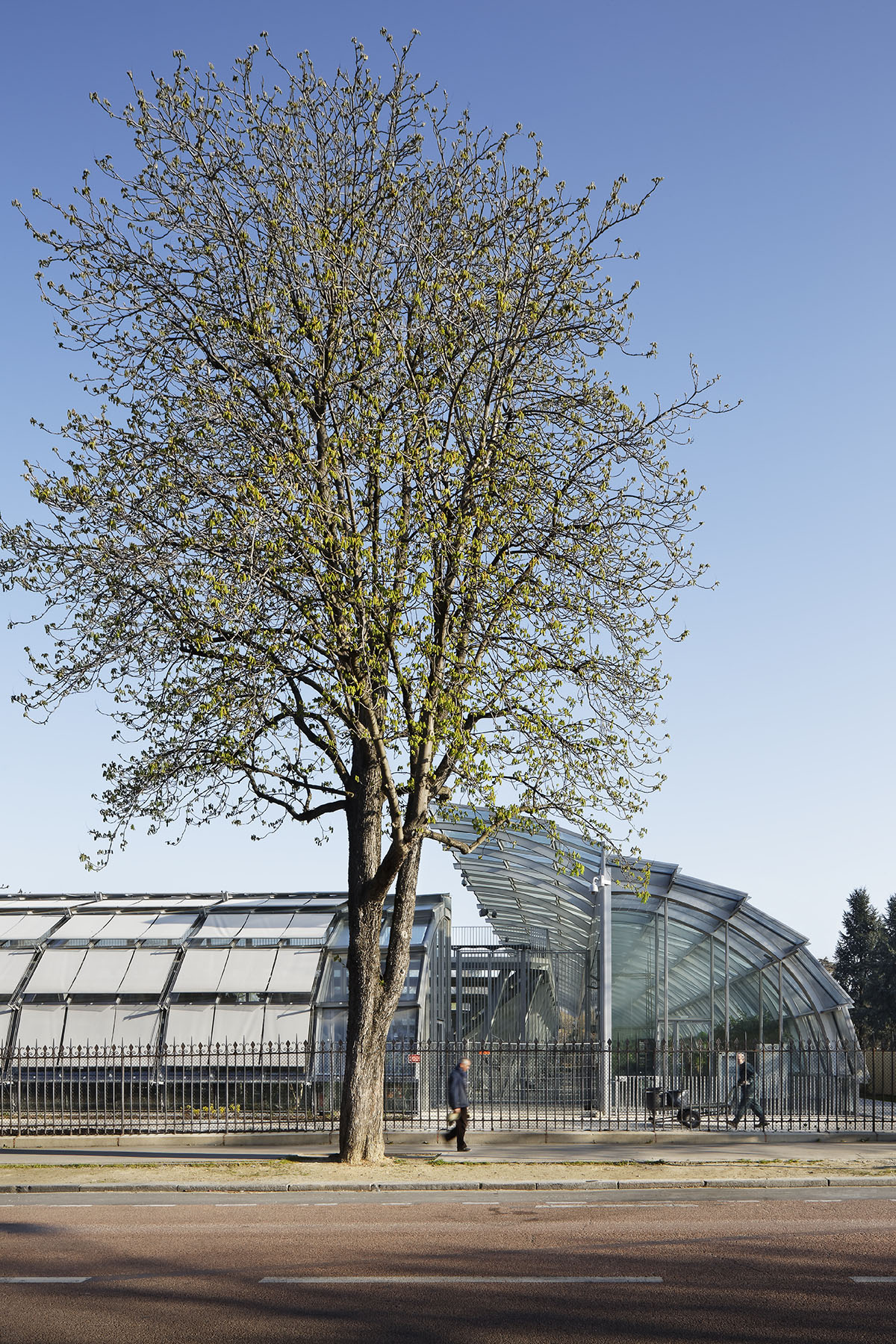
The sports project of the Fédération Française de Tennis is coherent and the construction of the new tennis court is in dialogue with the existing buildings based on a contemporary vocabulary. The Simonne-Mathieu court is both a showcase for high performance sport and a renewed botanical development.
While the building is developed perimetrically to the existing tennis court prompting the perambulation of the public through the new greenhouses, it is no less orientated in its relationship with the historic garden.
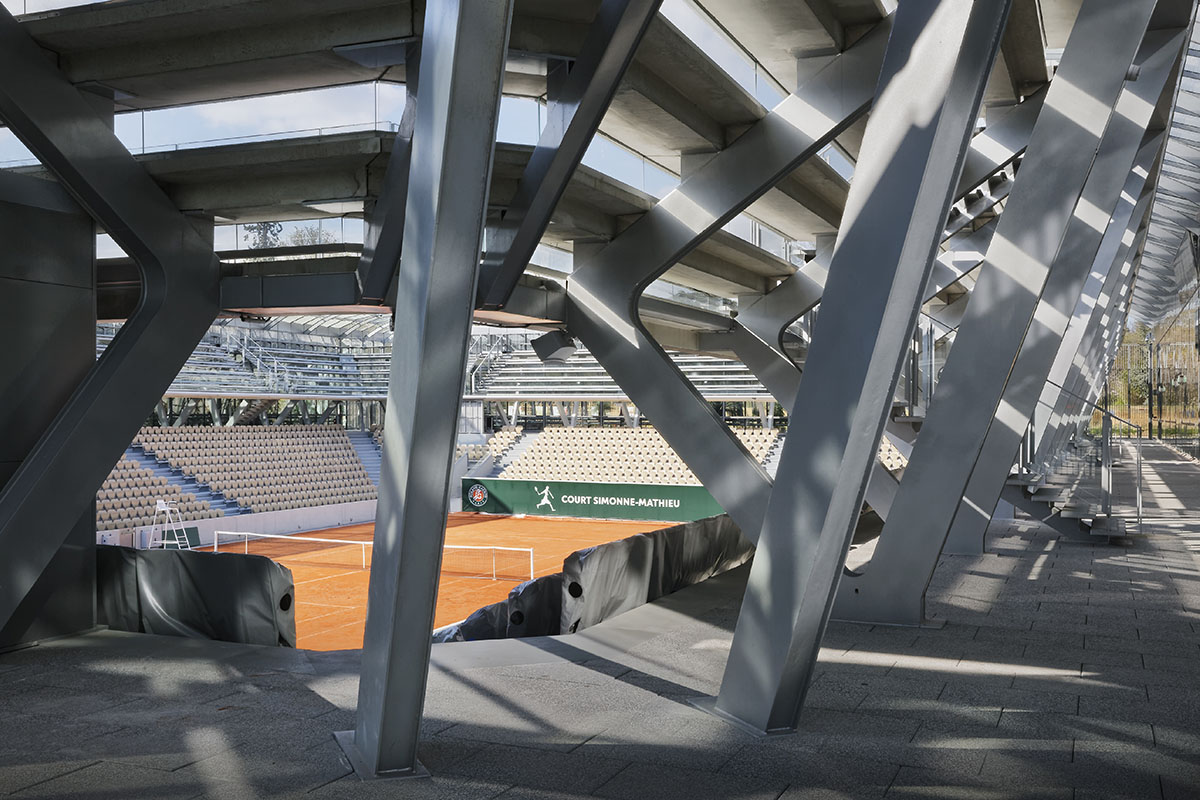
To the North, through the contemporary garden, the tennis court is in direct connection with the garden of the poets from the Porte d’Auteuil. To the South, behind its gated park fence, the stadium appears as a showcase along the boulevard d’Auteuil facing the Molitor Swimming Pool and the tennis courts of the Jean Bouin training stadium.
The new gate could constitute, beyond the tournament period, a specific access for the uses that the facilities would have throughout the year. To the East, the garden maintenance areas are reorganized in a more inconspicuous manner. To the west is the direct link to the main site and Gordon Bennett Avenue, amongst millstone buildings of very different functional status and open to different audiences, especially during the tournament.
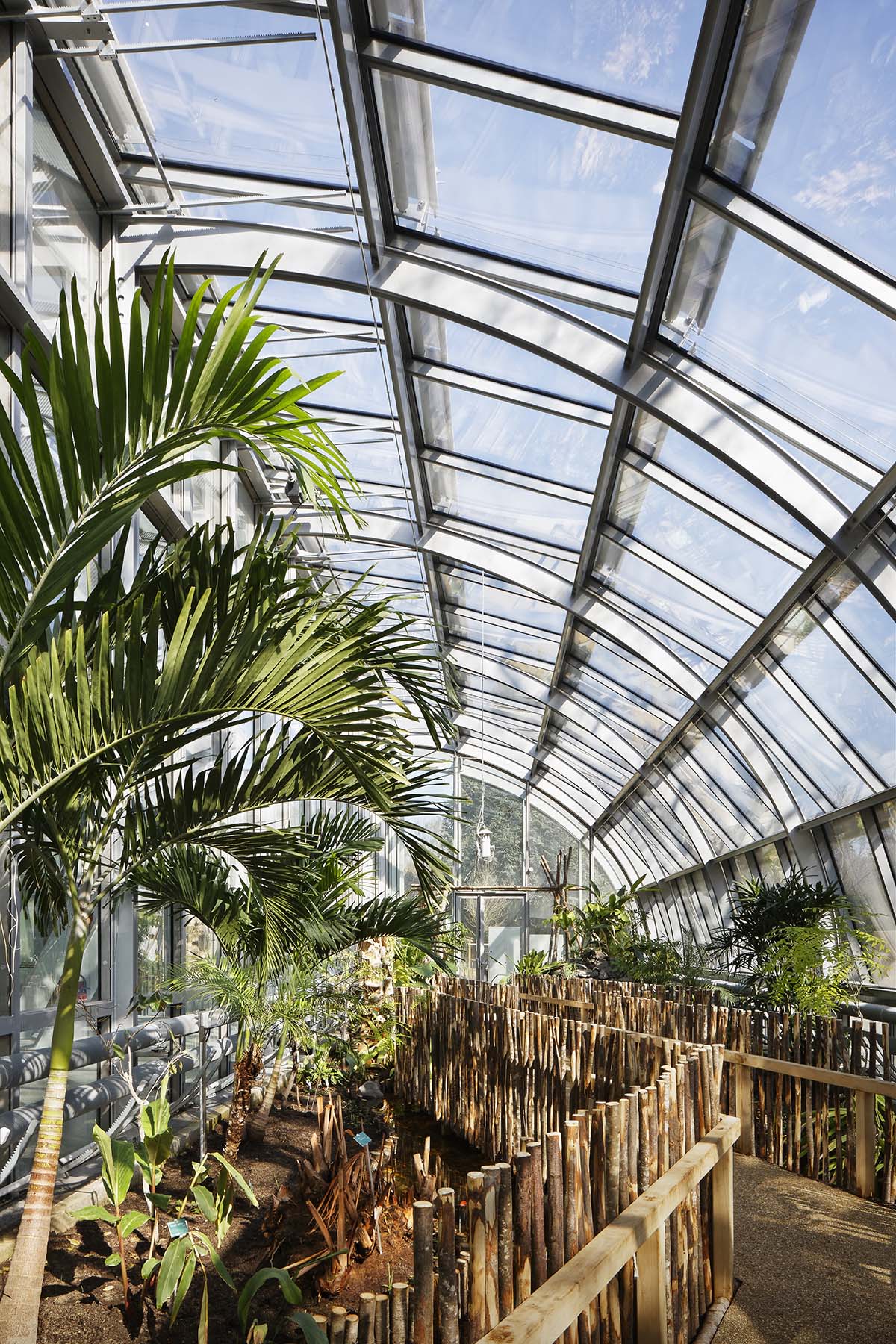
Thus, the new Simonne-Mathieu tennis court must at the same time maintain a strong coherence in relation to the gardens and clearly define itself along enhanced public access and circulation routes.
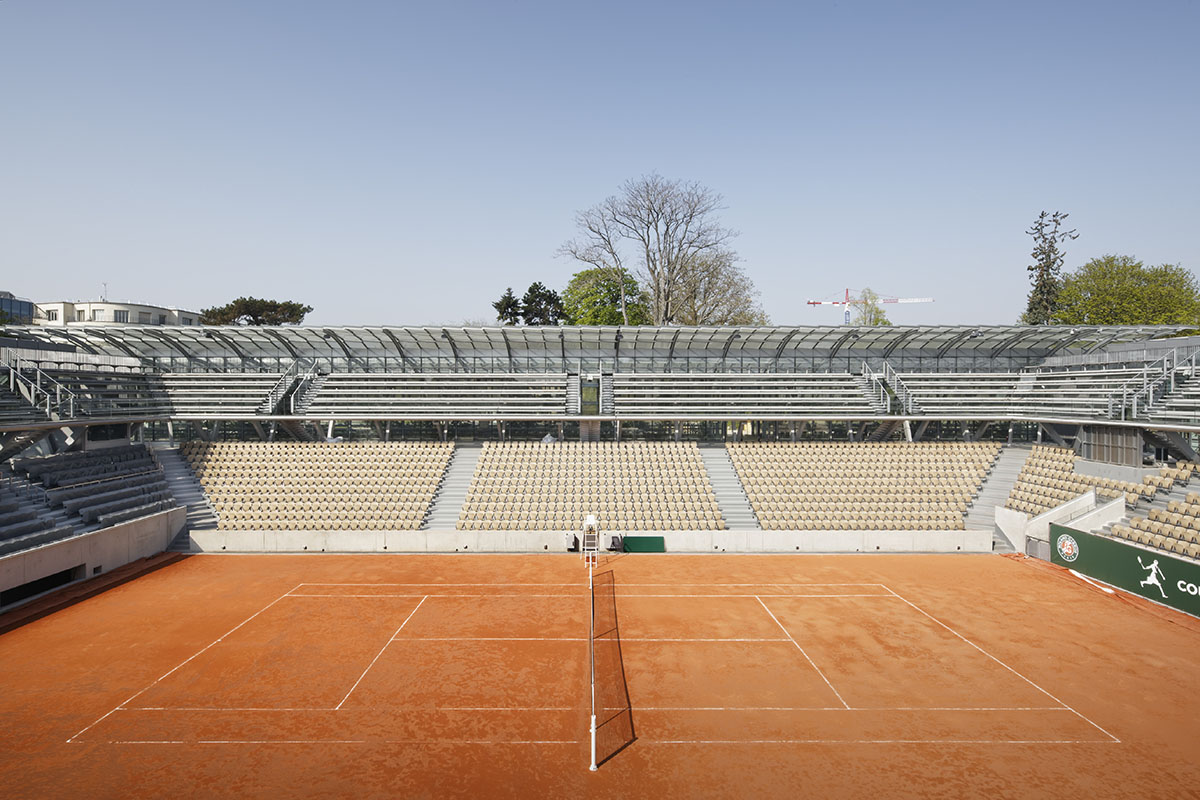
"Two periods will be distinguished in the life of this building, that of the tournament of Roland-Garros and that of its situation within the garden all the year round. The qualities of the garden, its horticultural collections, its botanical diversity, will be made accessible to a large number of visitors and will be open for everyone’s pleasure," added the architects.
"Public flow management is a major issue in the dialogue between the facility and the garden. During the period of the tournament, the millstone buildings of the orangery and the florist find in their program definition a resonance with the use of the new Simonne-Mathieu tennis court."
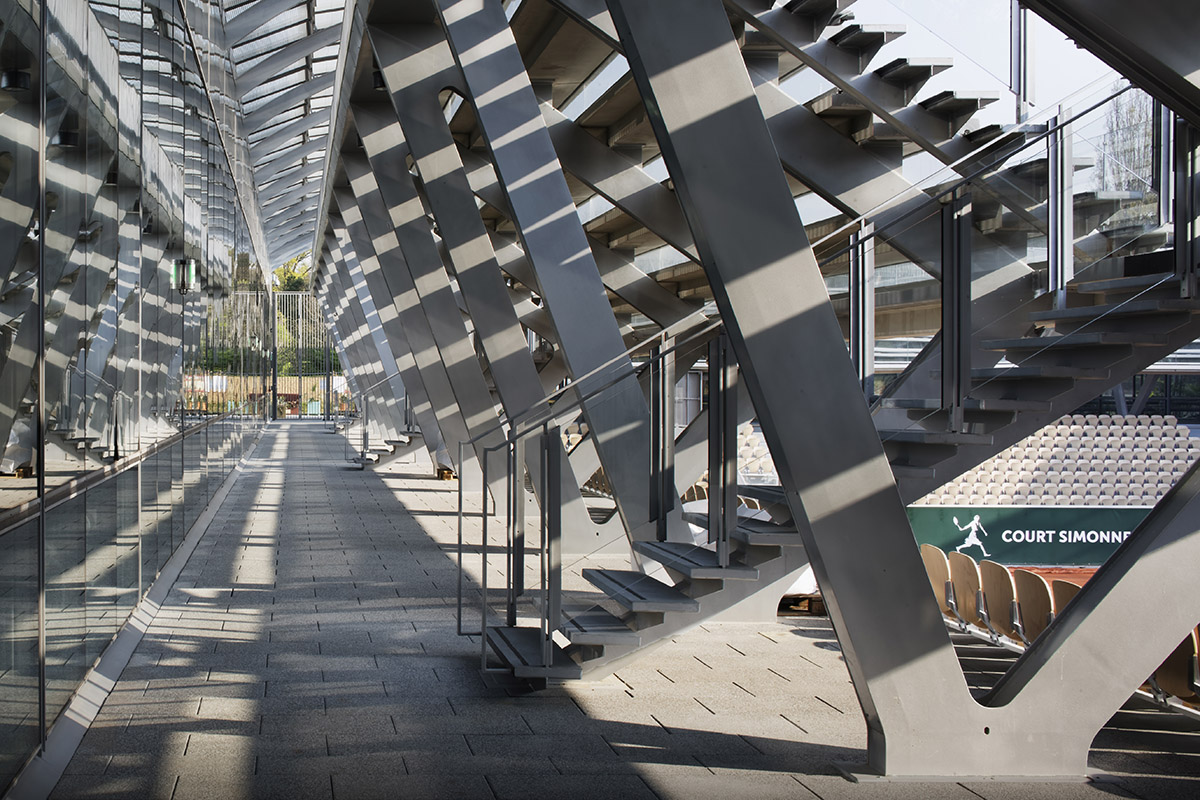
Outside the tournament period, the new tennis court will be part of the public circulation route through the greenhouses. Thanks to the Direction des Espaces Verts et de l’Environnement de la Ville de Paris, a carefully landscaped presentation of newly formed biotopes and the botanical qualities of the new project promote a natural pedestrian movement inside the greenhouses.
It is during these two times of the year, at these two rhythms, that the building addresses very different functionalities and circulation routes providing its very particular quality.
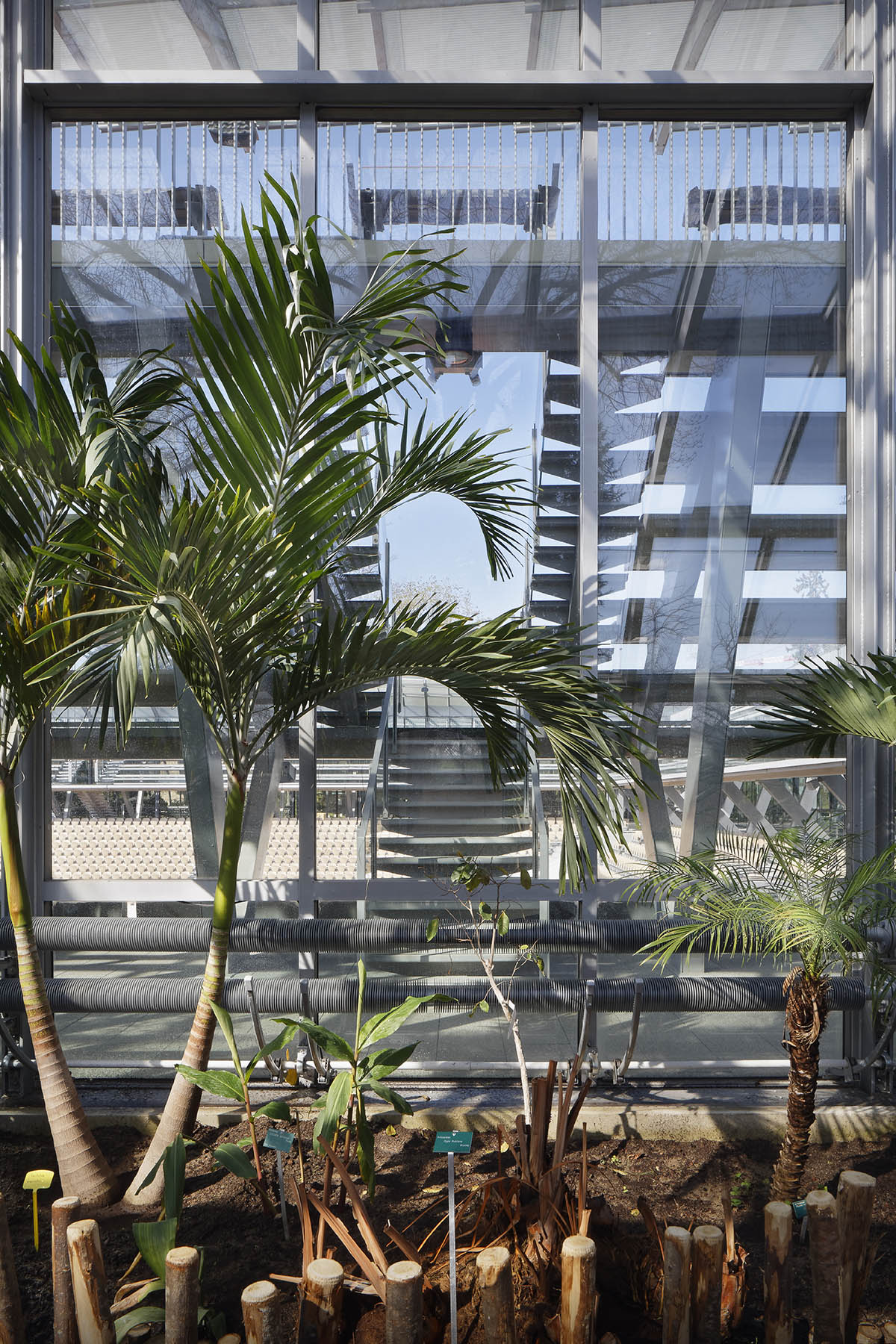
The project is oriented in the same direction as the historic greenhouses. On the east and west sides, there are two big 70 m long greenhouses oriented in the north-south direction and prolonged by the canopies of the upper tribunes. On the north and south sides, two 40m wide greenhouses are situated.
If the architecture of the nineteenth century was marked by the development of steel and glass, the project proposes today to translate this concern into a contemporary vocabulary as an elegant variable inertia steel structure supporting scaled glass elements which is possible to build today while expressing contemporary know-how.
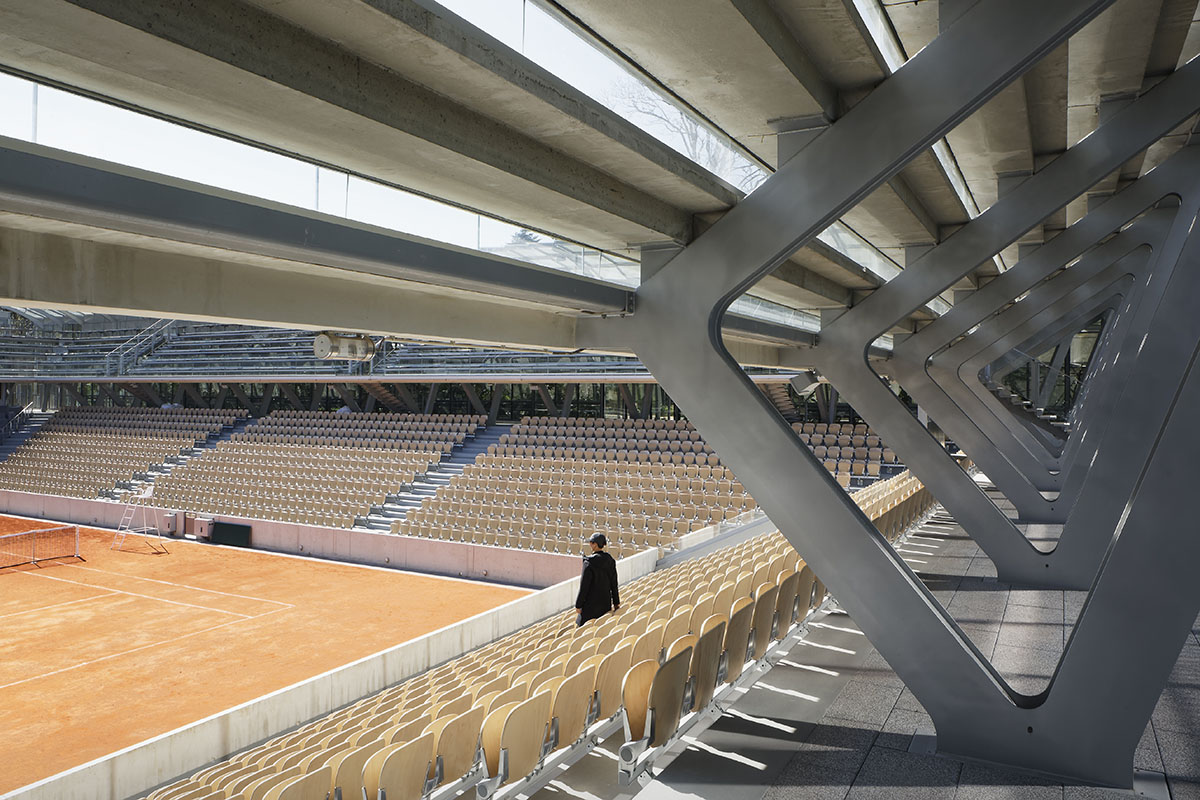
Depending on the orientation, the glass is fritted to protect spectators without throwing shadows on the tennis court.
"The project pays particular attention to environmental characteristics, obviously by the bioclimatic nature of the facilities for plants, but also by the economy of means, the economy of materials and the attention paid to the construction of this exceptional building," explained the architects.
"The transparency and lightness of this structure and its cover specifically address the nature of the plants they host but also the reception of the public and athletes."
"It is an “athletic and constructive jewel” that takes its place in this garden with delicacy, thus improving the plant exposure scheme and showing how the improved Simonne-Mathieu tennis court can be functional while entering into a dialogue with nature in the garden it houses," they added.
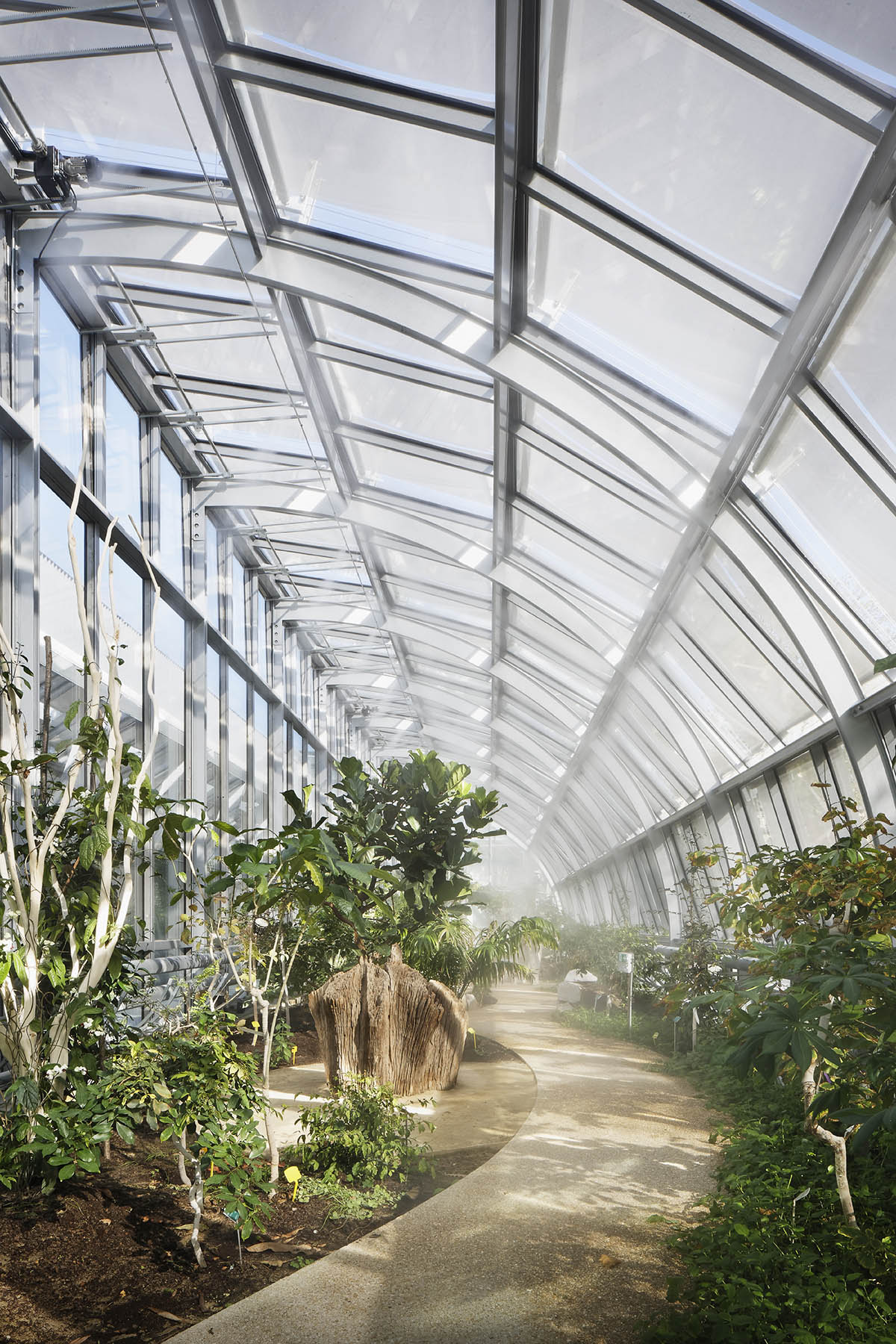
With its history, to enter into dialogue with the historical monument which it borders in a contemporary writing of greenhouses and light structures.
With its environment, by the attention paid to built scale, to the flow of different audiences, to different times of the year, and by the treatment of the transparencies and the materiality of the glass facades.
With its program, by the double characteristics of botany and sports. The new tennis court surrounded by greenhouses reinterprets and extends the existing botanical garden, by the constitution of biotopes and differentiated atmospheres according to the four orientations of the greenhouses.
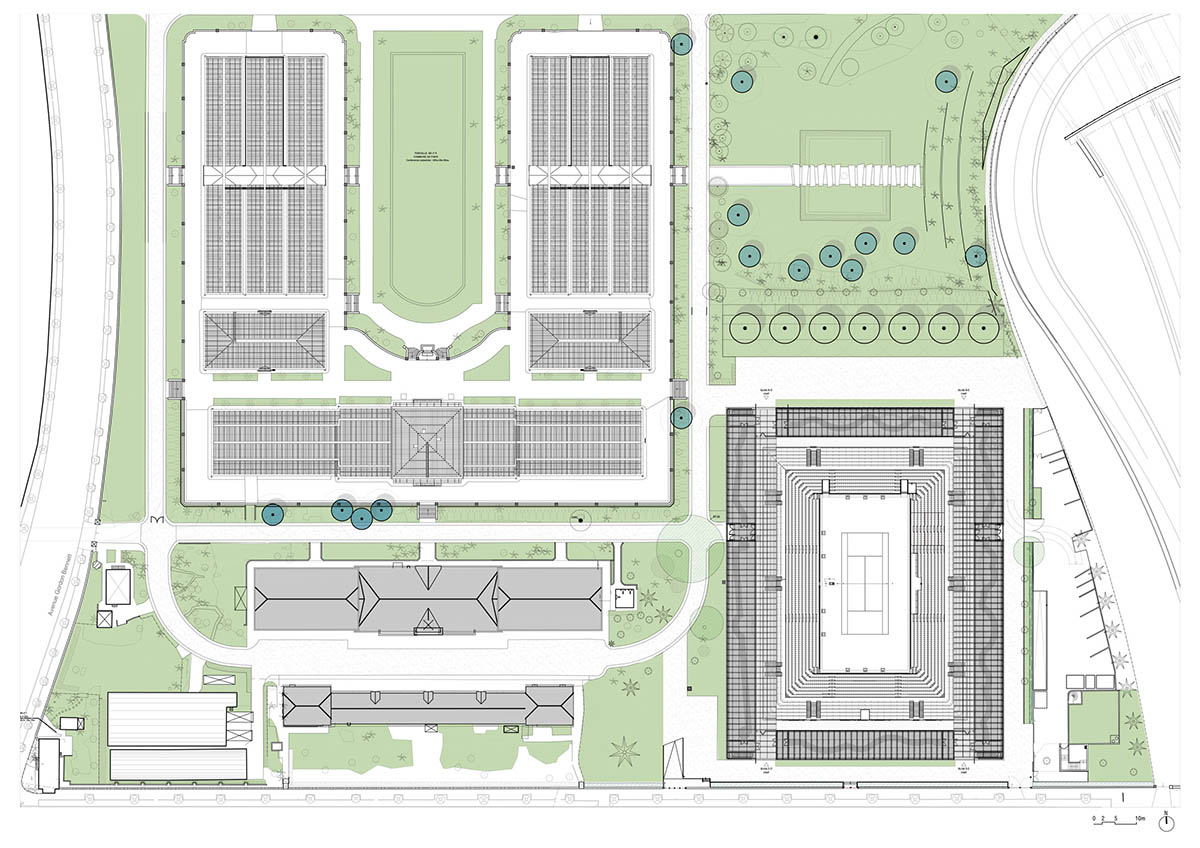
It also welcomes an audience of 4950 people coming to attend a high-level competition in a unique environment. There is here a new form of performance that could serve tomorrow as a reference for the new relationship between high-level sport and environmental attention.
The construction works themselves had to be exemplary while located on an extremely sensitive site, as much for the presence of vegetation as for its exiguity. It was obviously a clean building site that allowed to replant the displaced trees to the north of the plot and to insert the project in a more global landscaping plan.
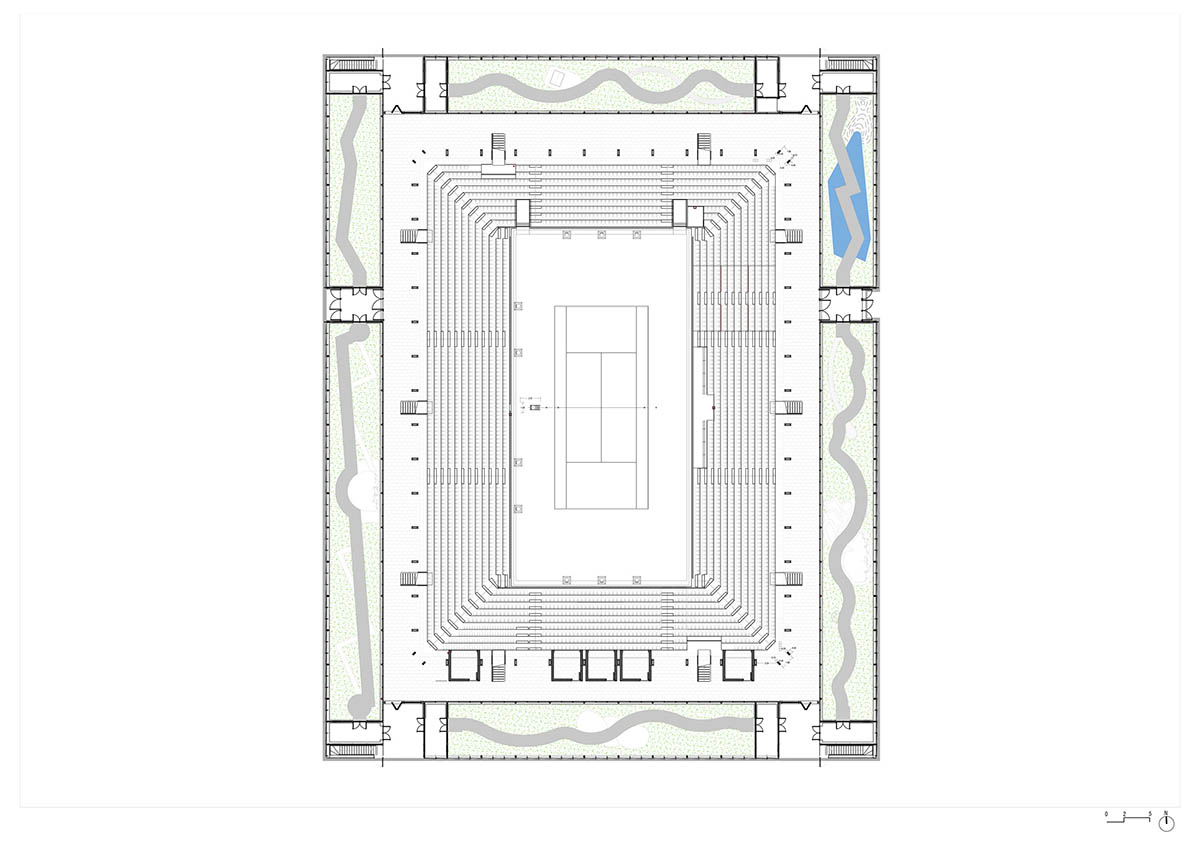
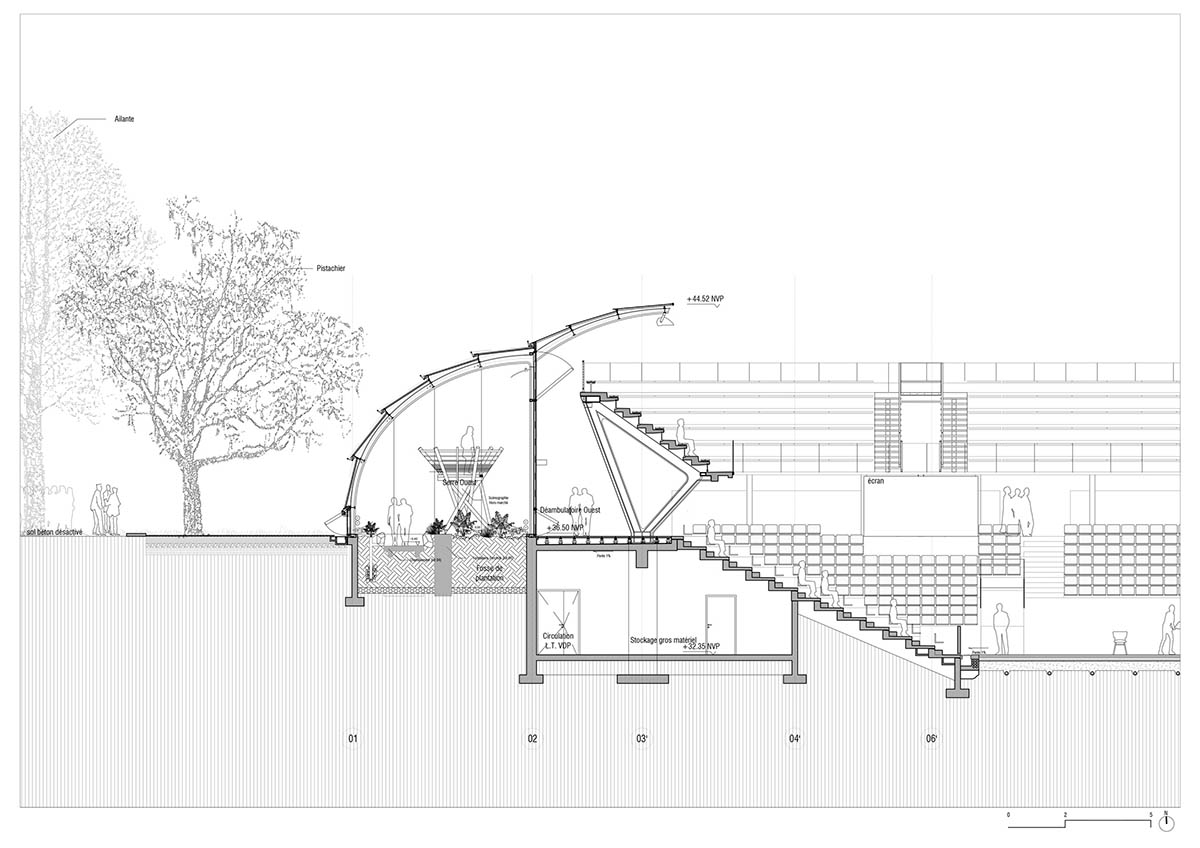
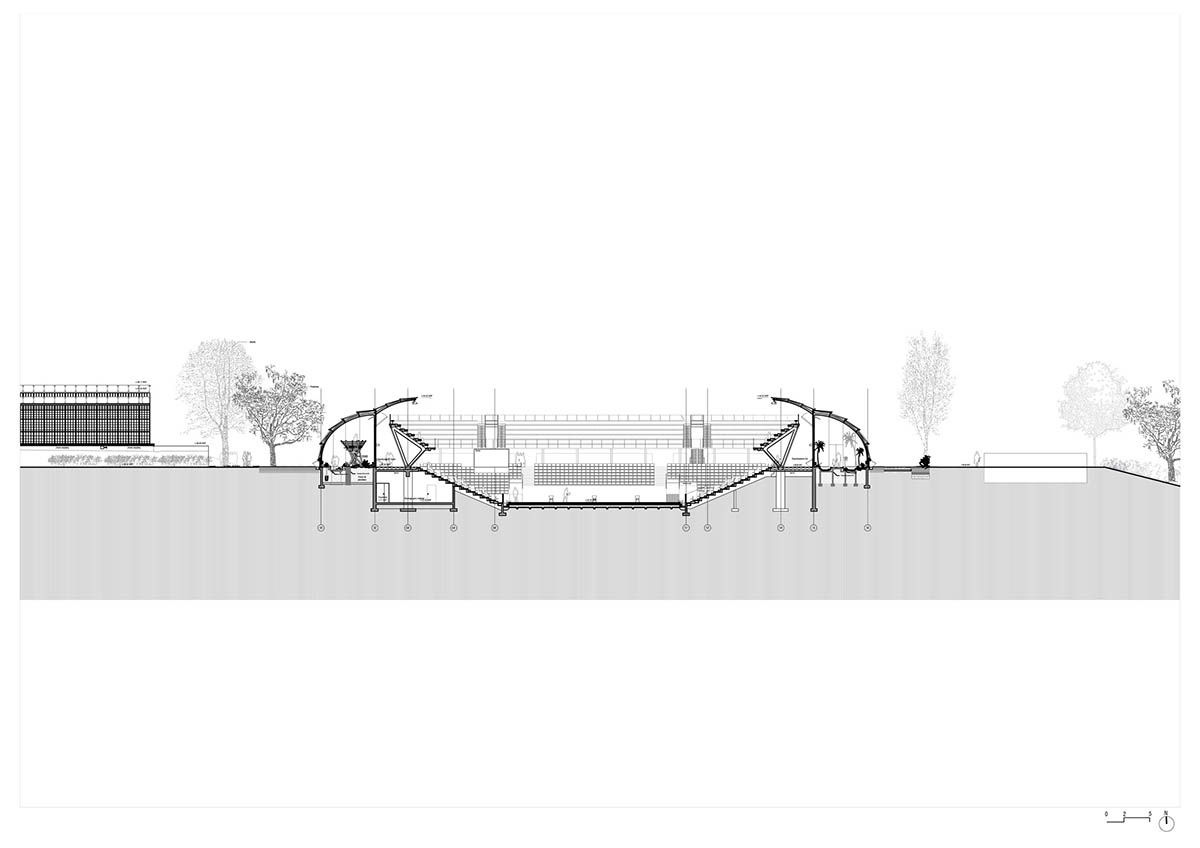
Project facts
Architect: Marc Mimram Architecture & Associés
Structure: Marc Mimram Ingénierie
Fluid and environment engineering: INEX
Lighting: AARTILL
Acoustics: AARTILL
Facades: VS-A
Client: Fédération Française de Tennis
Contractor: Vinci
All images © Camille Gharbi
